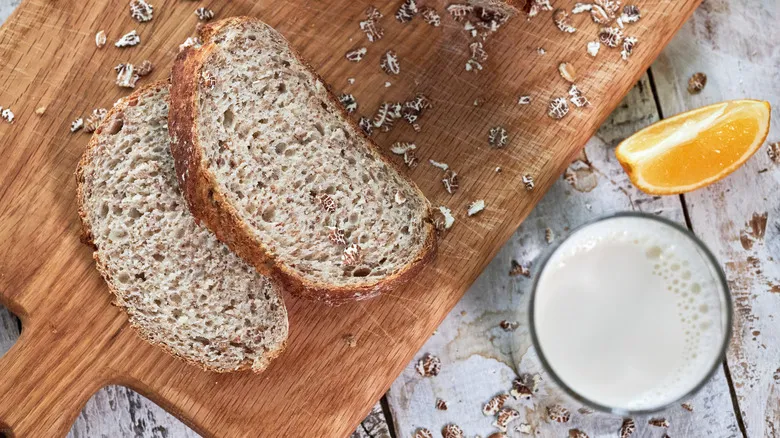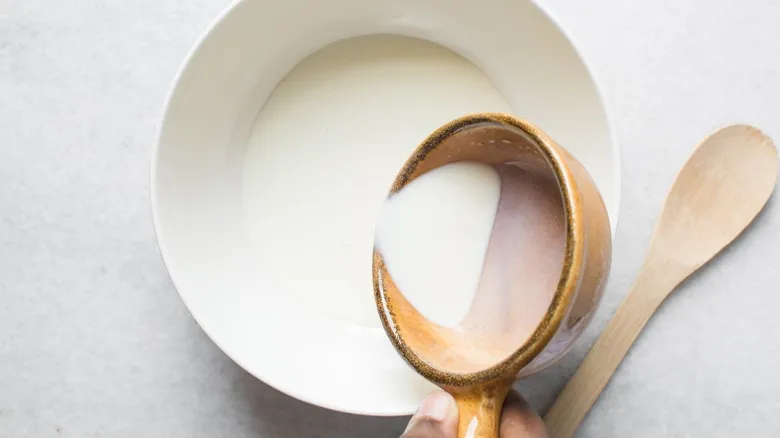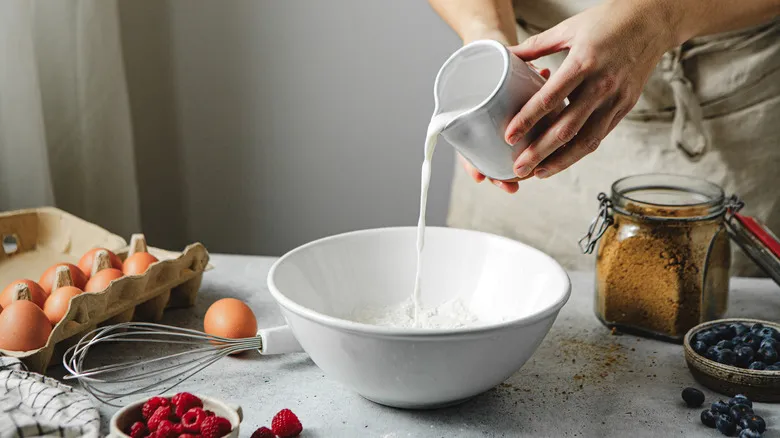What can sour milk add to your bread

The primary appeal of incorporating sour milk into your bread dough is its flavor. Since the milk hasn't completely soured, you won't experience a strong tangy sourdough taste. However, each bite will still offer a subtle zing that your taste buds will immediately recognize, while the rich, creamy characteristics of dairy milk will also come through. You can think of it as a blend of sourdough and traditional milk-based bread.
The advantages go beyond just flavor. It also contributes to a softer, more tender crumb and interior texture. On a microscopic level, bread consists of numerous strands of gluten that provide its characteristic chewiness and structure. Lactic acid—the compound that gives sour milk its flavor—acts like a conditioner. When added to your dough, this acid can relax the gluten strands, resulting in a much softer core and crumb. Additionally, when you mix sour milk (an acid) with baking soda (a base) in your dough, they react to produce tiny bubbles of carbon dioxide. These bubbles help your bread rise and create a lighter texture. This same principle is utilized in soda bread, allowing it to leaven without the need for yeast.
At what point should the milk be thrown out?

While sour milk can be excellent for baking, using a slightly expired carton requires careful consideration. When milk begins to develop a sour taste or odor, it's wise to conduct a few tests before incorporating it into your dough. Pour some into a glass; if it appears smooth and white without any visible clumps or curds (and the sourness is mild), it’s likely safe to use. However, if the milk not only tastes or smells off but also looks questionable—showing solid chunks on the surface or a distinct yellow hue—it's a clear indication that the milk is no longer good, and it's best to discard it.
The good news is that you don’t have to abandon your sour bread project altogether. Buttermilk can serve as an excellent substitute, providing similar benefits. Alternatively, you can use regular milk mixed with a bit of lemon juice for acidity. Whisk the dough together with your chosen acidified dairy, and you’ll be on your way to creating delicious, soft loaves in no time.
Recommended

The Secret Ingredient You Need Every Time You Bake Muffins

Joanna Gaines Gives Pecan Pie A Spicy Twist With Ancho Chile

How Boston Cream Pie Got Its Inaccurate Name

How Much Money Can You Really Save By Making Your Own Bread?
Next up

